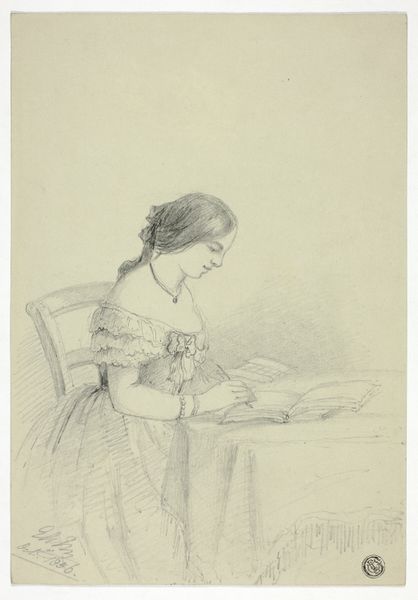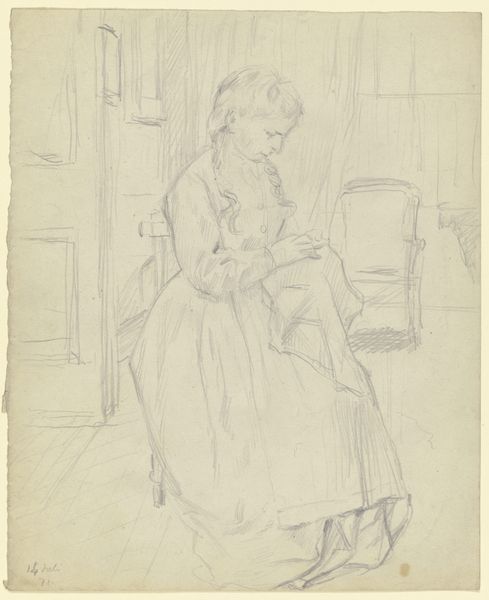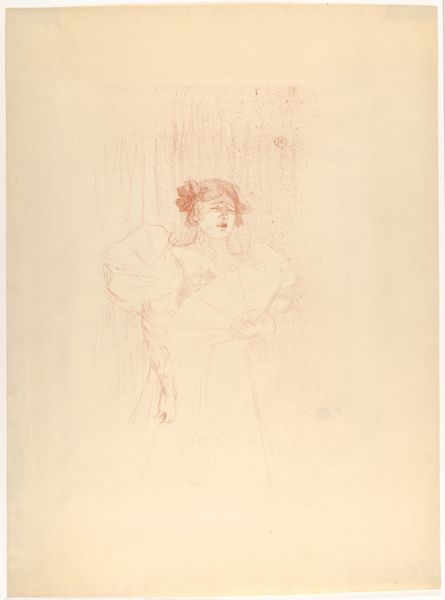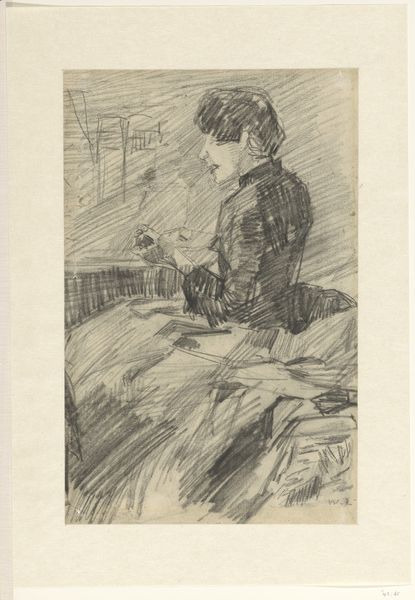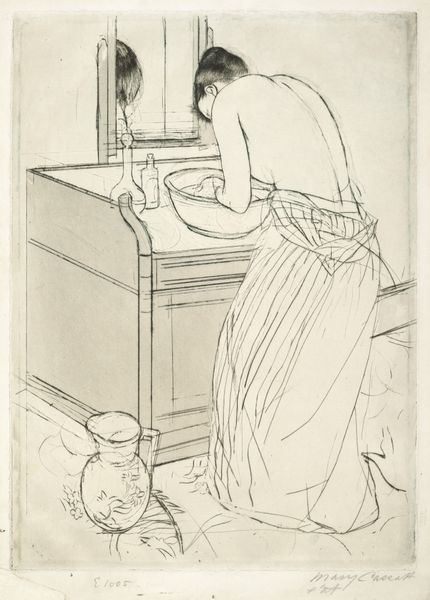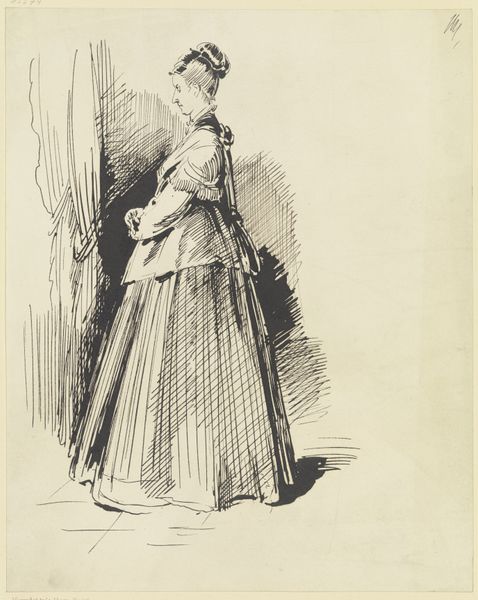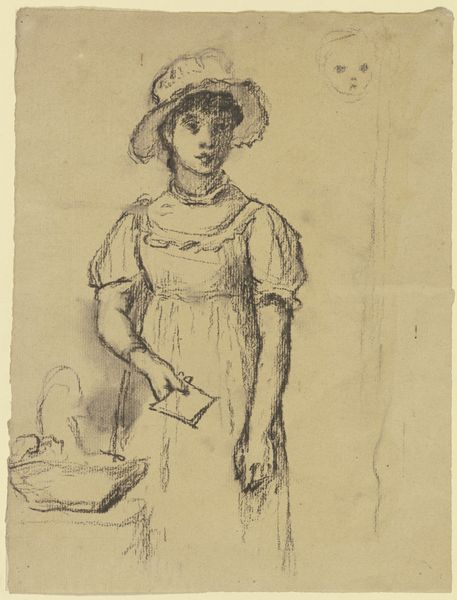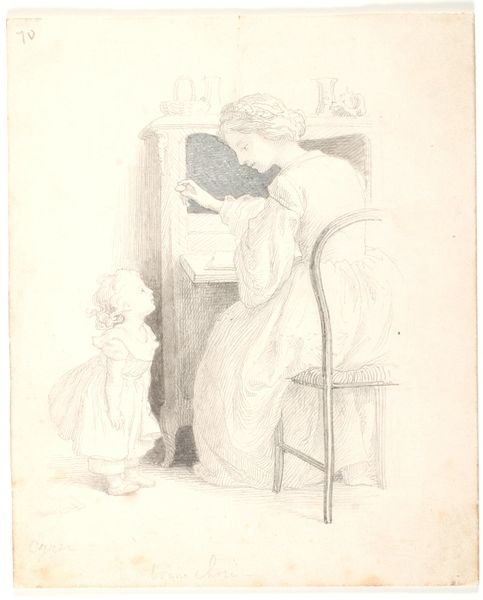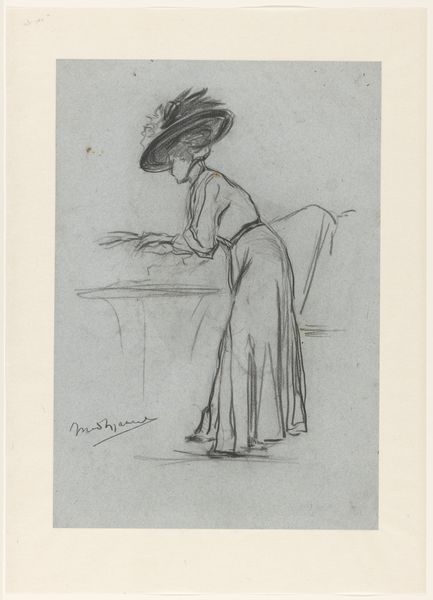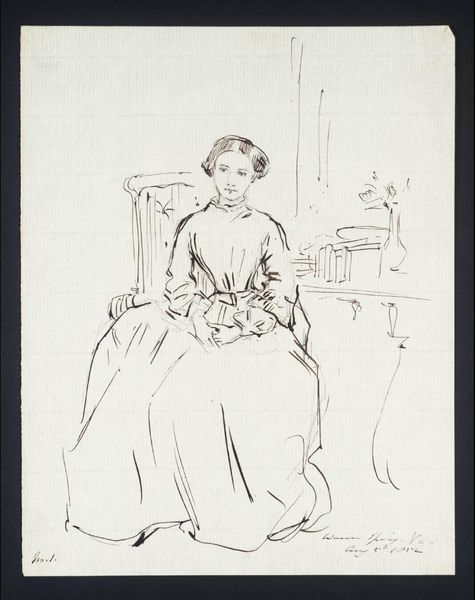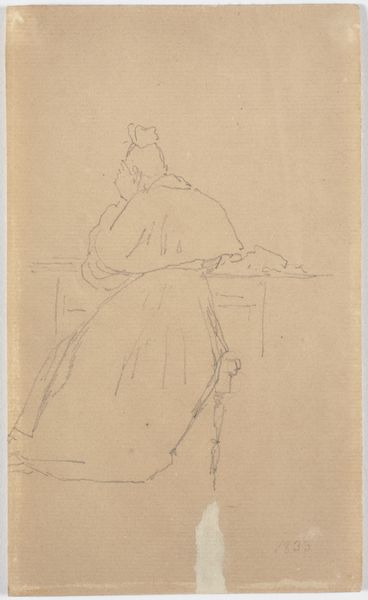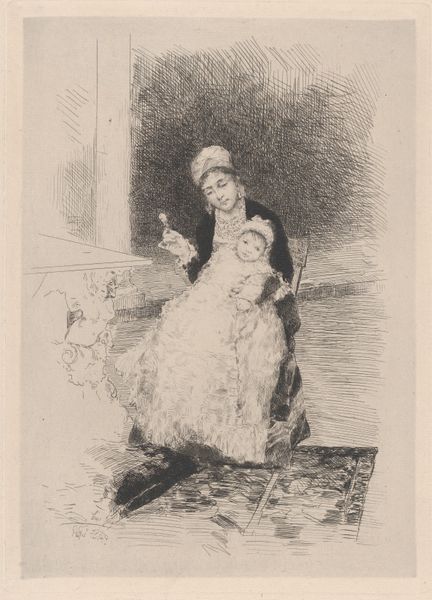
Dimensions: 467 × 218 mm (image); 472 × 218 mm (plate); 547 × 345 mm (sheet)
Copyright: Public Domain
Curator: What a delicate work. This is "Breakfast" by Jean-François Raffaëlli, made around 1895. It's currently held at the Art Institute of Chicago. Editor: It has such a quiet, intimate feel, doesn’t it? Almost like a fleeting glimpse into a private morning ritual. I'm particularly drawn to the etching—it seems almost effortless. Curator: The choice of etching is certainly deliberate. Think about the social context of printmaking at the time. Raffaëlli, while exhibiting in impressionist circles, was invested in making art accessible to a wider public beyond the traditional salon system. Etchings allowed for multiple reproductions. Editor: Right. Making art more democratic. So this subject matter—a woman, perhaps a domestic worker, bringing a tray—plays into that, doesn't it? The quotidian elevated, almost. I wonder about the labor involved in both the scene depicted and in the production of the etching itself. Curator: Exactly. Raffaëlli was quite interested in depicting the lives of working-class Parisians. You can see this concern with everyday life in his other prints and drawings as well. The very materials, the paper, the ink, speak to this goal of accessibility. It’s a far cry from oil paint intended for wealthy patrons. Editor: I’m thinking about how the medium—etching— also impacts the imagery itself. Look at how it captures the texture of the dress, almost emphasizing its materiality, but also its wear and tear. Then there is that endearing pug; its very presence speaks to socio-economic status of the subjects depicted here. Curator: The image circulates through the art market, of course, acquiring its own value. Think about who had access to acquiring this print then and who does now? What does that say about shifting tastes and values? The Art Institute owning this artwork is evidence of institutional collecting practices, that changed, shaped what art historical value became defined as... Editor: Very good point! It makes you reflect on art's journey through the ages and its ability to provide a lens into societal structures and evolving tastes. It all comes back to those structures of who controls imagery and how it gets valued by history and what gets preserved! Curator: Precisely. Thinking about art through a materialist and historical lens allows to dig up meaning layered inside a seemingly everyday etching!
Comments
No comments
Be the first to comment and join the conversation on the ultimate creative platform.
